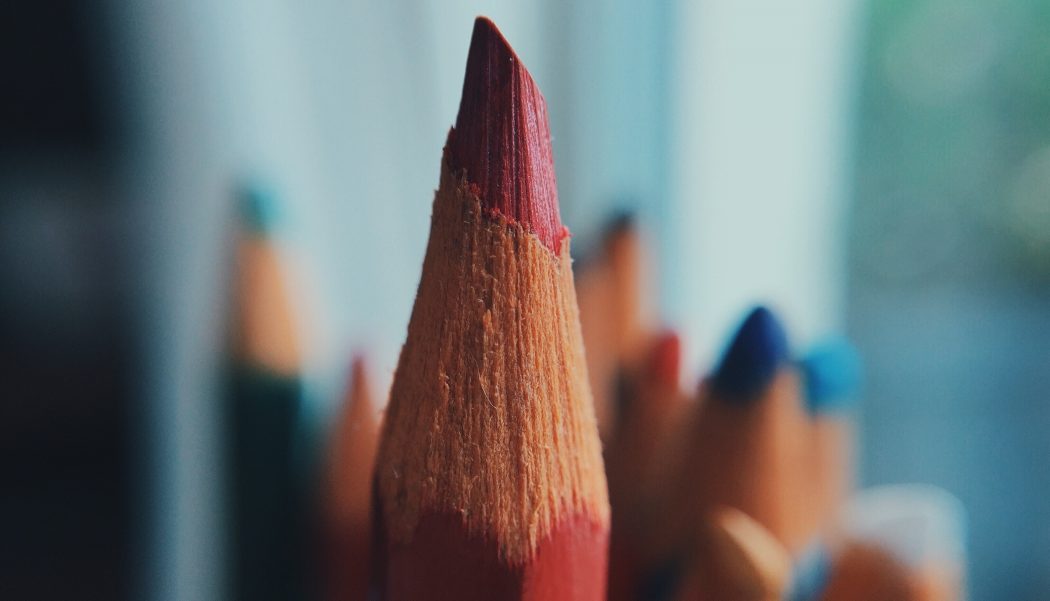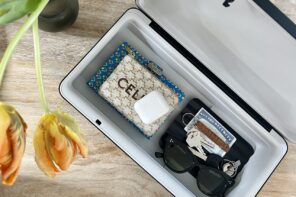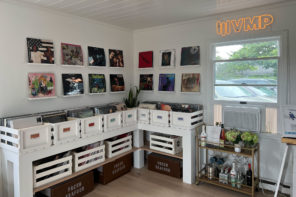The act of expression can take many shapes, forms and mediums—private, public, visual, informational, emotional, grandiose or subtle. One of mankind’s most well-known forms of expression has been around for millions of years. The simple, yet daunting task for many, of simply writing it all down.
With an invite from AllSwell notebooks and their founder/workshop MC Laura Rubin, I recently had the opportunity to take part in a journaling workshop at Quincy, Quincy Davis’ new collaborative space and self-curated boutique in Montauk, New York. In recent years, the act of writing down your thoughts has been scientifically proven to be beneficial to all types of people, especially men, so there’s never been a better time to try it out.I had some experience with the medium going into the writing session by journaling throughout trips I have taken in the past. But for me, it was more about holding on to those experiences, places and memories and less about what I was doing on regular basis in real life. Beyond that, most of my writing had been less about myself, and more about certain topics or angles. Being a journalist/editor was always, “the light at the end of the tunnel,” as far as my writing career went. I must say, it was refreshing to take a new approach on writing. The workshop did just that. For me, it seemed to be broken down in five parts:
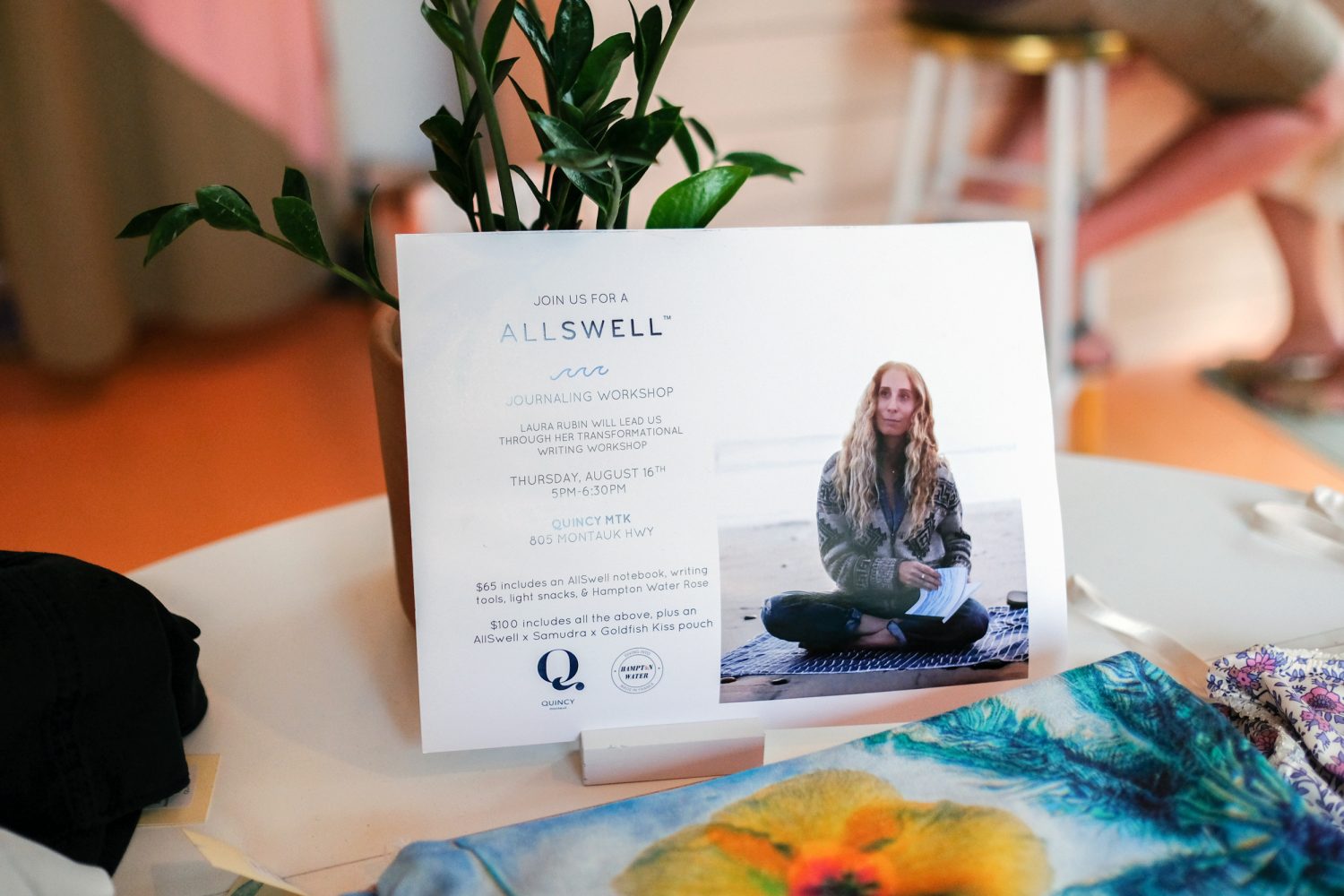
Inspiration:
First was finding inspiration. When the workshop started, we were all asked to introduce ourselves and say what our favorite body of water was. Although at first it didn’t seem like it, this was exercise one—each person finding the ability to establish what they wanted to say and why. Choosing a body of water, and why it was important to the person, was the first step in being able to tell a story or express a feeling and why.
Next, Laura gave us a few writing examples to read leading up to putting pencil to paper. We read them aloud as a group. Each of these pieces served a purpose in terms of inspiration and the various methods to approach a page. This particular part of the workshop opened my eyes, as I never knew there were so many ways to tackle journaling. From a visual perspective, to the phonetic level, a poetic approach or even just the simple choice of words and what they meant on any given page or sentence, to even spewing out thoughts in an unorganized, organic flow or, contrarily, very structured or premeditated. The beauty of it was that none of it was right or wrong. It was about the freedom to do whatever you want in your own journal.
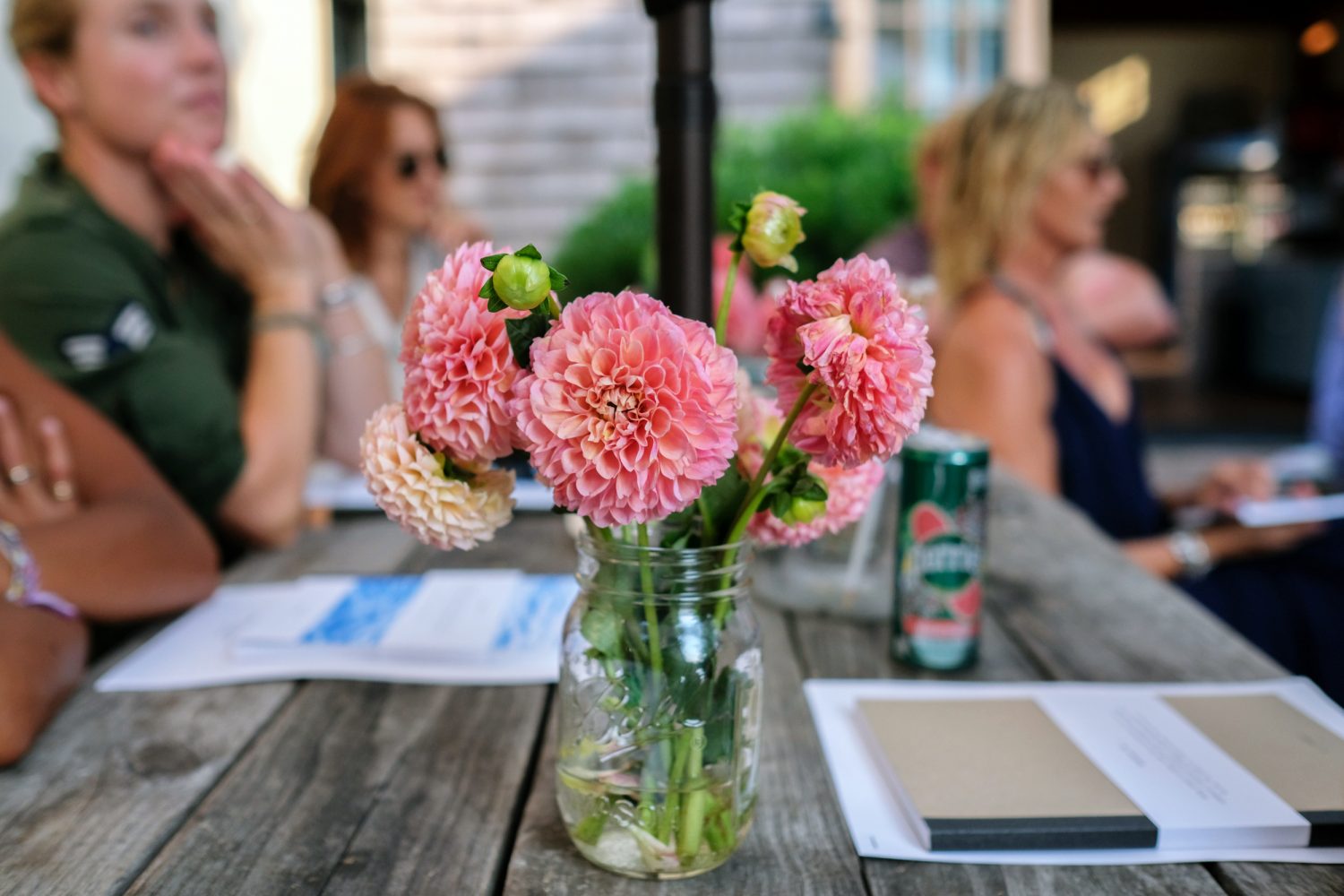
Approach:
After exploring some of the examples provided in the workshop, it was time for us to try it out for the first time. We were asked to journal about anything for a few minutes. Find something to write about, and put it down (Laura called this a “free write”). Each person’s account was different and personal. Many found it difficult to start, but once you got going, the words flowed. After six minutes, we were asked to pause, and some were asked to share. Everyone found it equally difficult to share what they had just written. A few did, but we all talked about the experience and what it was like for each of us personally.
From there, we started digging more into the approach of journal writing. Referring back to the different ways to tackle a page, along with choosing a topic and continuing to write what was on our minds. For the second exercise, we underlined what we thought were the most significant words in our first attempt. With those words, Laura asked us to write a poem. Not a poem of any specific structure or way, but just a poem that should try to incorporate the most prominent words underlined from each of our attempts at exercise one. We all did this for a few minutes, and then shared again.
By this point, you were starting to see the group open up a bit more. Talking more about the topics or words chosen and why. I found it interesting to watch everyone slowly start to blossom as a direct result of simply being able to open up to themselves on paper. It was cool to hear everyone’s reaction to the exercises as they progressed because, although everyone’s feelings about the workshop seemed to be similar, everyone’s approach to the exercises were varied and individual. And again, none of it was wrong. Journaling is all about the way the person writing wants to take it.
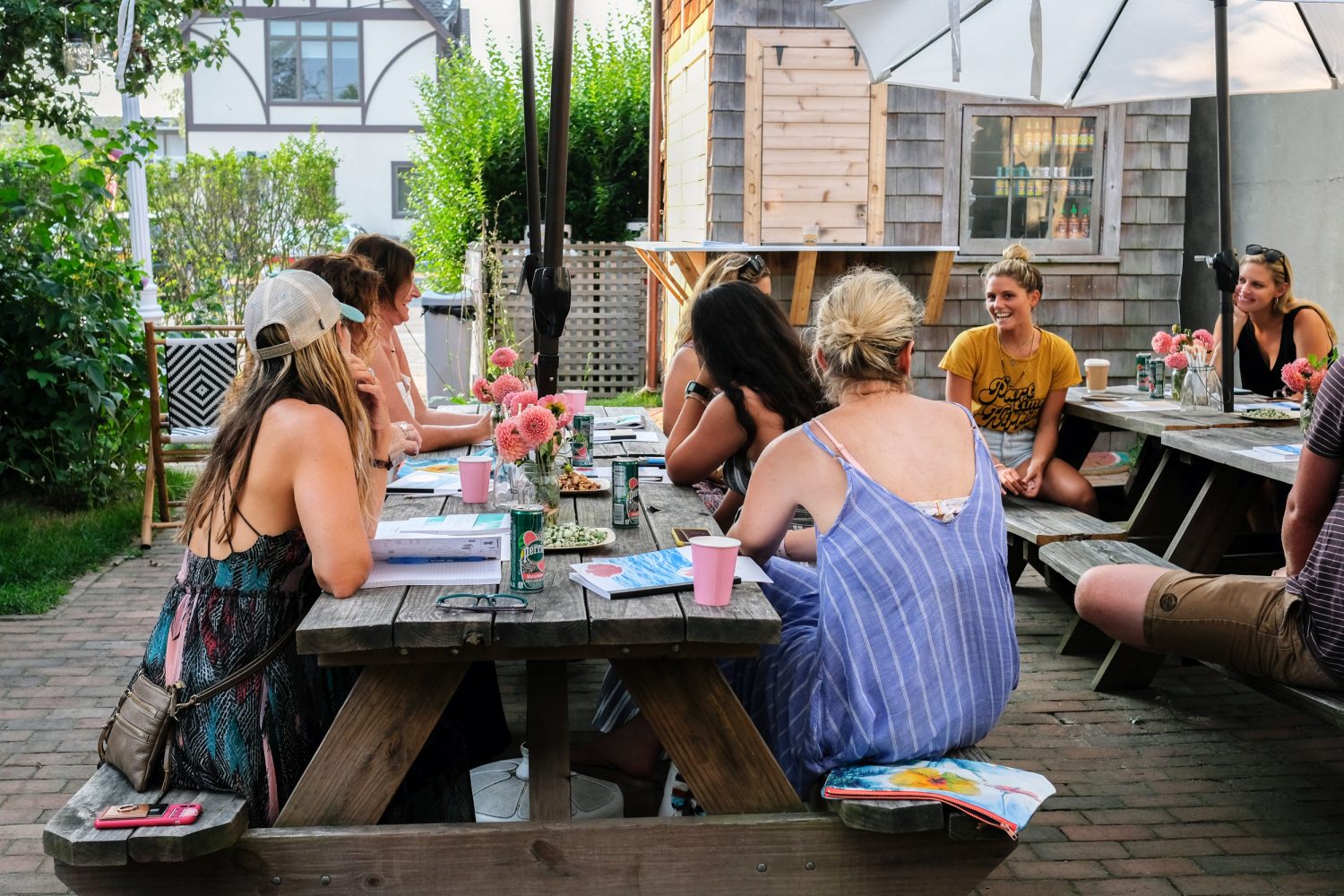
The Proof:
For the final part of the exercise, Laura gave us more facts about journaling and how significant it can be for some people. It was surprising to hear some of the facts about writing in a journal and why there is such an unknown, unexplored benefit that a lot of people miss out on. One of the facts she mentioned was about how science has shown that it is often found to be more beneficial for men than women, whom by cultural standards are known to or even expected to have journals, diaries or daily reflection notebooks, among many expressive avenues that are much more commonly accepted for women and not so much men. Whereas men, don’t have as many opportunities to express themselves or organize their emotions and thoughts, and, due to pop culture predispositions and cultural standards, keep their thoughts and emotions to themselves.
It was also interesting to hear about the mental and emotional aspects with regards to the benefits journaling provides to people who take part in it regularly. How it has the power inspire individuals to organize their thoughts more coherently for themselves, resulting in both the natural ability to explore new creative outlets and boost self accountability and clarity, in their careers and work lives as well. This segued to the final round of writing.
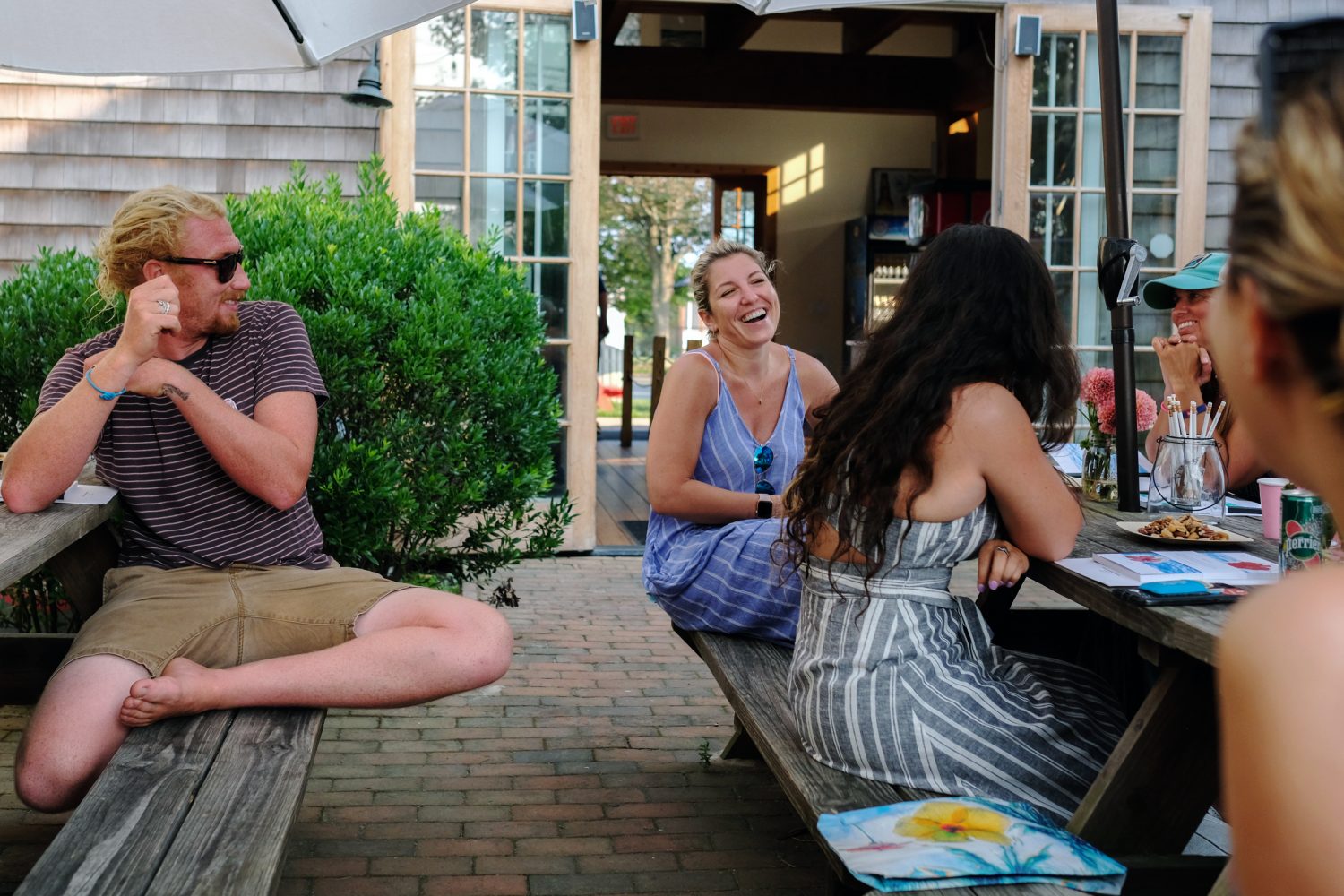
Pencil to Paper:
For the final part of the workshop, we were asked to take a few minutes to write about any topic that came to mind based around the sentence, “My first time.” Everyone giggled a bit when this was the given task. Mostly because I don’t think anyone knew what they were going to write about straight away, but as the minutes passed, everyone’s pencils started moving quickly. By the time the pencils were dropped, some people had written almost two full pages in less than 10 minutes. We then looked back at the exercise again and discussed how it went for each of us individually.
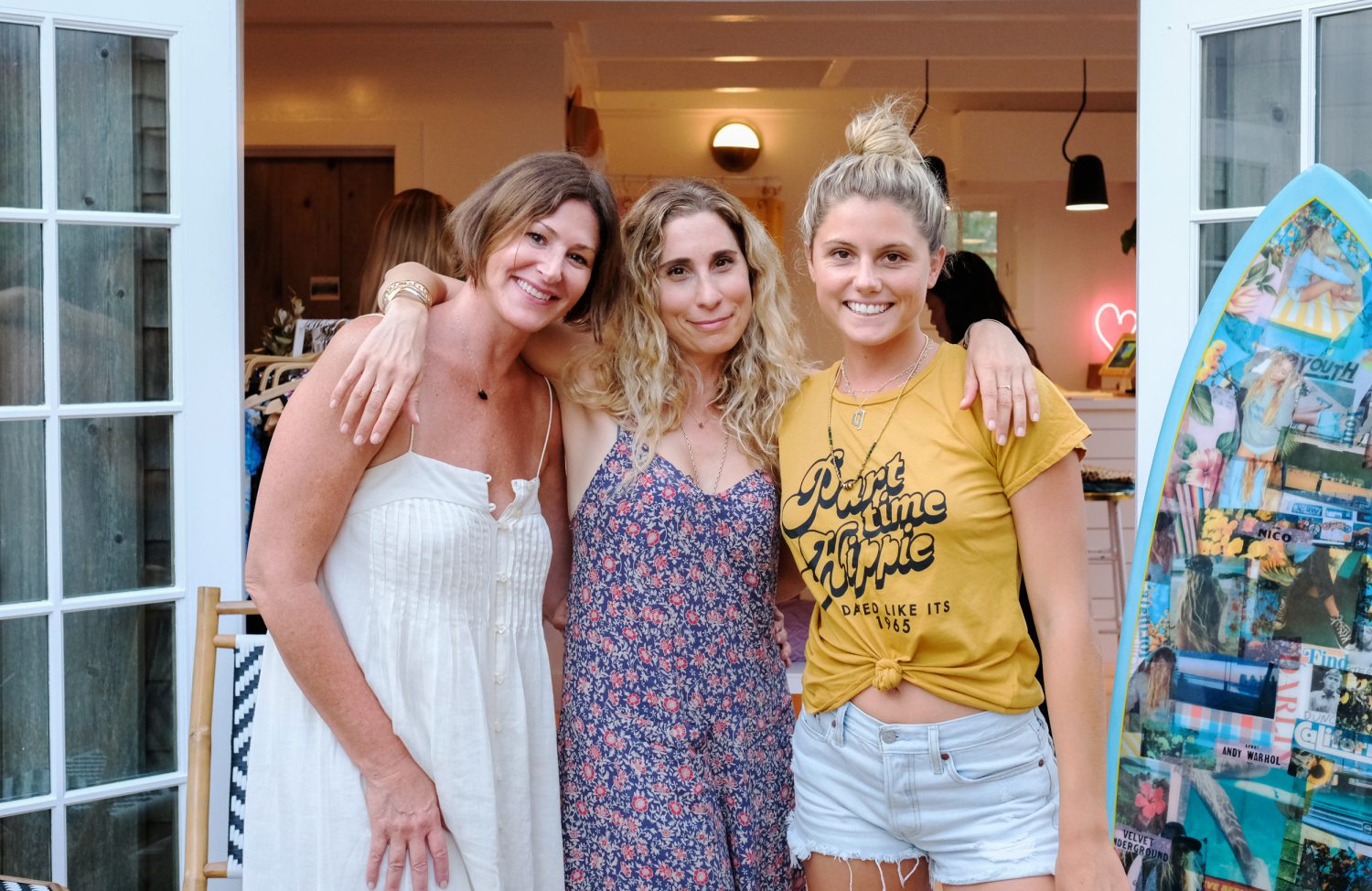
Reflection:
A big part of the entire workshop seemed to be the reflection aspect happening after each passage was written. We’d sit back and think about what we had just written. Whether we read our work aloud or just talked about how it made us feel, there was a level of expression and the realization of doing it each time we wrote.
In retrospect, it was refreshing and eye-opening to see the sorts of possibilities that can come from journaling. Whether documenting a trip, writing a poem or expressing oneself through personal writing exercises or even sketching or scrap-booking, the amount of clarity and consciousness that writing out thoughts can bring a person was explored in a novel and detailed way in the AllSwell exercises.
The takeaway message was pretty straightforward—don’t put too much pressure on yourself to journal. It shouldn’t be looked at as an obligation, but more of a personal priority or a tool to get out ideas, stories, memories or whatever may be hanging out up in your head on any given day. Journal in whatever way is most beneficial and logical for you.
If you ever have any questions about journaling or want to know more about workshops like the ones AllSwell puts on, feel free to follow them on instagram @allswellcreative or go to their website for tips and to shop their half-lined, half-blank page notebooks and accessories. Happy journaling people.

